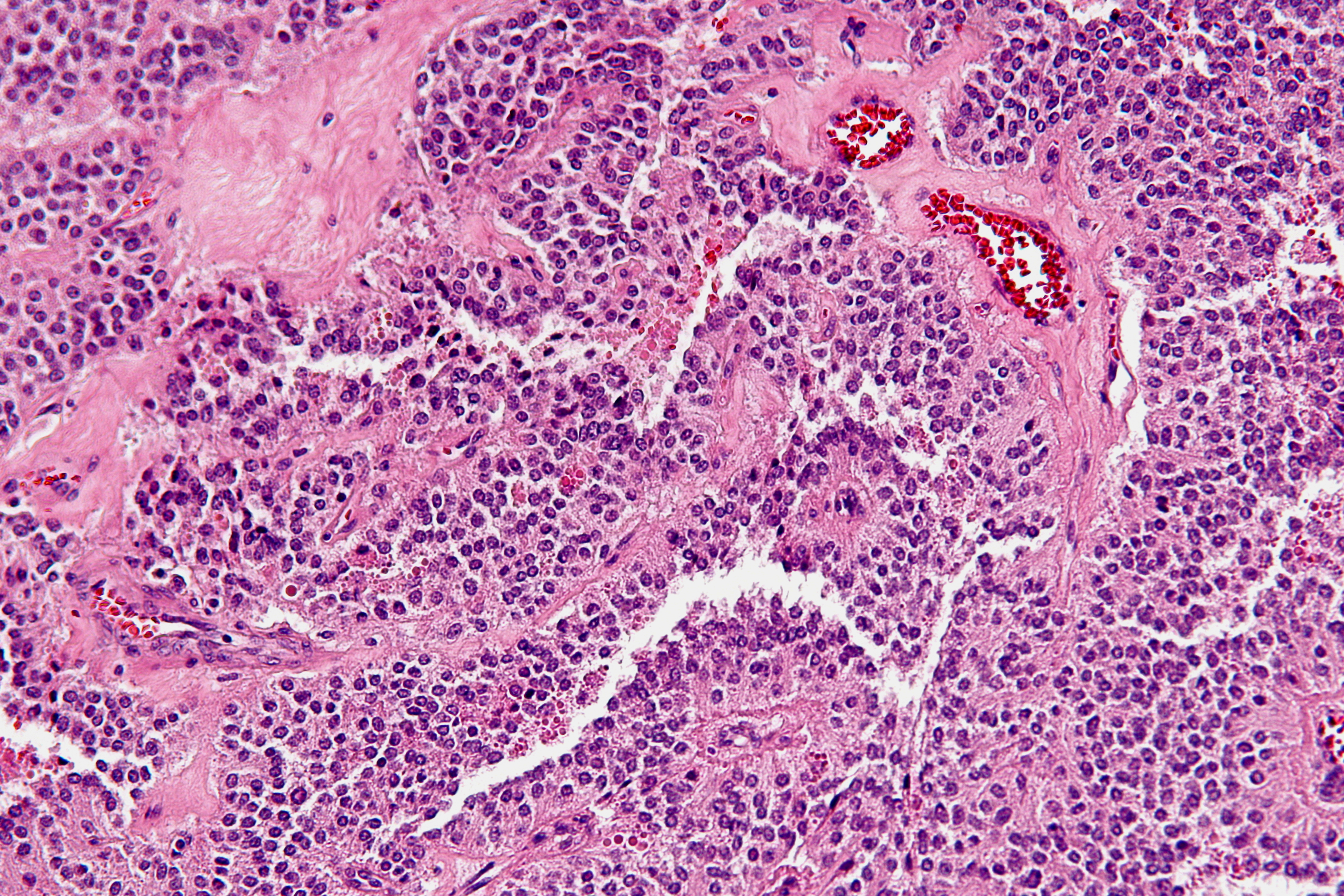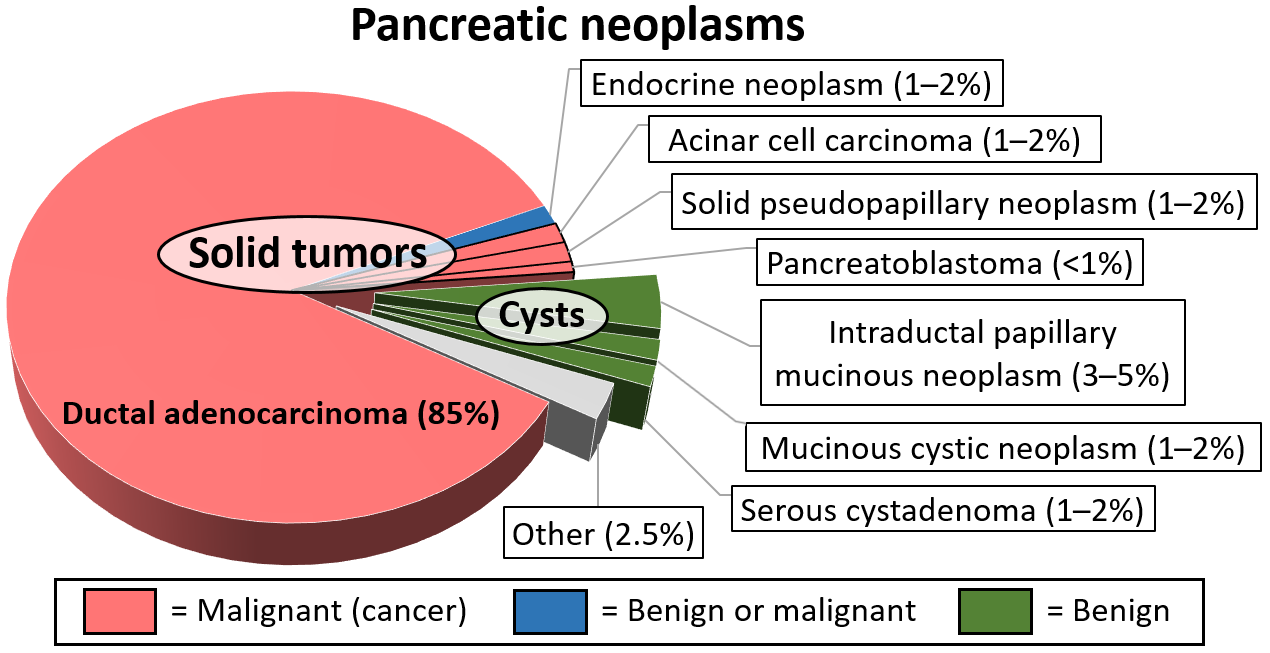Solid Pseudopapillary Neoplasm on:
[Wikipedia]
[Google]
[Amazon]
A solid pseudopapillary tumour is a low-grade malignant

 The gold standard for diagnosing solid pseudopapillary tumour of the pancreas is
The gold standard for diagnosing solid pseudopapillary tumour of the pancreas is
neoplasm
A neoplasm () is a type of abnormal and excessive growth of tissue. The process that occurs to form or produce a neoplasm is called neoplasia. The growth of a neoplasm is uncoordinated with that of the normal surrounding tissue, and persists ...
of the pancreas
The pancreas is an organ of the digestive system and endocrine system of vertebrates. In humans, it is located in the abdomen behind the stomach and functions as a gland. The pancreas is a mixed or heterocrine gland, i.e. it has both an en ...
of papillary architecture that typically afflicts young women.
Signs and symptoms
Solid pseudopapillary tumours are often asymptomatic and are identified incidentally on imaging performed for unrelated reasons. Less often, they may cause abdominal pain. Solid pseudopapillary tumours tend to occur in women, and most often present in the third decade of life.Anatomy
Gross morphology
Solid pseudopapillary tumours are typically round, well-demarcated, measuring 2–17 cm in diameter (average 8 cm), with solid and cystic areas withhemorrhage
Bleeding, hemorrhage, haemorrhage or blood loss, is blood escaping from the circulatory system from damaged blood vessels. Bleeding can occur internally, or externally either through a natural opening such as the mouth, nose, ear, urethra, vag ...
on cut sections.
Histomorphology
Solid pseudopapillary tumours consist of solid sheets of cells that are focally dyscohesive. The cells in the lesion usually have uniform nuclei with occasional nuclear grooves, eosinophilic or clear cytoplasm andPAS
PAS or Pas may refer to:
Companies and organizations
* Pakistan Academy of Sciences
* Pakistan Administrative Service
* Pan Am Southern, a freight railroad owned by Norfolk Southern and Pan Am Railways
* Pan American Silver, a mining company in ...
positive eosinophilic intracytoplasmic globules. Necrosis is usually present and, as cell death preferentially occurs distant from blood vessels, lead to the formation of pseudopapillae.
Immunohistochemistry
Solid pseudopapillary tumours show positive nuclear staining for beta catenin, as well as positive immunostaining forCD10
Neprilysin (), also known as membrane metallo-endopeptidase (MME), neutral endopeptidase (NEP), cluster of differentiation 10 (CD10), and common acute lymphoblastic leukemia antigen (CALLA) is an enzyme that in humans is encoded by the ''MME'' ge ...
, CD56
Neural cell adhesion molecule (NCAM), also called CD56, is a homophilic binding glycoprotein expressed on the surface of neurons, glia and skeletal muscle. Although CD56 is often considered a marker of neural lineage commitment due to its discover ...
, vimentin
Vimentin is a structural protein that in humans is encoded by the ''VIM'' gene. Its name comes from the Latin ''vimentum'' which refers to an array of flexible rods.
Vimentin is a type III intermediate filament (IF) protein that is expresse ...
, alpha 1-antitrypsin
Alpha-1 antitrypsin or α1-antitrypsin (A1AT, α1AT, A1A, or AAT) is a protein belonging to the serpin superfamily. It is encoded in humans by the ''SERPINA1'' gene. A protease inhibitor, it is also known as alpha1–proteinase inhibitor (A1PI) ...
, and neuron specific enolase
Gamma-enolase, also known as enolase 2 (ENO2) or neuron specific enolase (NSE), is an enzyme that in humans is encoded by the ''ENO2'' gene. Gamma-enolase is a phosphopyruvate hydratase.
Gamma-enolase is one of the three enolase isoenzymes found i ...
; they are negative for chromogranin
Granin (chromogranin and secretogranin) is a protein family of regulated secretory proteins ubiquitously found in the cores of amine and peptide hormone and neurotransmitter dense-core secretory vesicles.
Function
Granins (chromogranins or sec ...
and pancreatic enzymes.
Diagnosis

 The gold standard for diagnosing solid pseudopapillary tumour of the pancreas is
The gold standard for diagnosing solid pseudopapillary tumour of the pancreas is cytopathology
Cytopathology (from Greek , ''kytos'', "a hollow"; , ''pathos'', "fate, harm"; and , '' -logia'') is a branch of pathology that studies and diagnoses diseases on the cellular level. The discipline was founded by George Nicolas Papanicolaou in ...
by endoscopic ultrasound (EUS) guided fine needle aspiration (FNA) of the lesion. After surgical excision, the tumor can undergo histopathology
Histopathology (compound of three Greek words: ''histos'' "tissue", πάθος ''pathos'' "suffering", and -λογία '' -logia'' "study of") refers to the microscopic examination of tissue in order to study the manifestations of disease. Sp ...
evaluation for cancer staging
Cancer staging is the process of determining the extent to which a cancer has developed by growing and spreading. Contemporary practice is to assign a number from I to IV to a cancer, with I being an isolated cancer and IV being a cancer that ha ...
.
Management
In most cases, solid pseudopapillary tumours should be resected surgically, as there is a risk of malignancy (cancer).See also
*Pancreatic cancer
Pancreatic cancer arises when cells in the pancreas, a glandular organ behind the stomach, begin to multiply out of control and form a mass. These cancerous cells have the ability to invade other parts of the body. A number of types of panc ...
*Pancreatic mucinous cystic neoplasm
Pancreatic mucinous cystic neoplasm (MCN) is a type of cystic lesion that occurs in the pancreas. Amongst individuals undergoing surgical resection of a pancreatic cyst, about 23 percent were mucinous cystic neoplasms. These lesions are benign, th ...
*Serous cystadenoma of the pancreas
Pancreatic serous cystadenoma is a benign tumour of the pancreas. It is usually found in the tail of the pancreas, and may be associated with von Hippel–Lindau syndrome.
In contrast to some of the other cyst-forming tumors of the pancreas (such ...
References
{{Digestive system neoplasia Digestive system neoplasia Pancreatic cancer